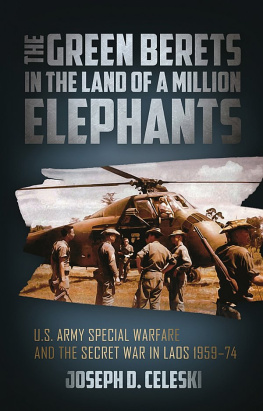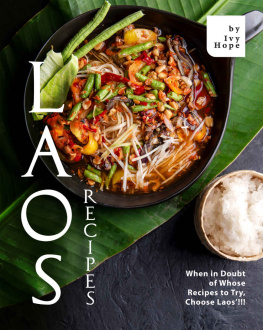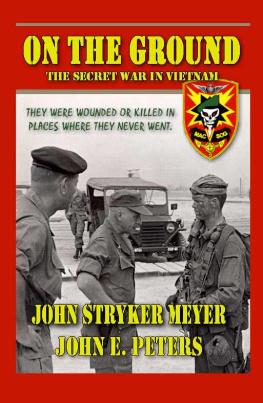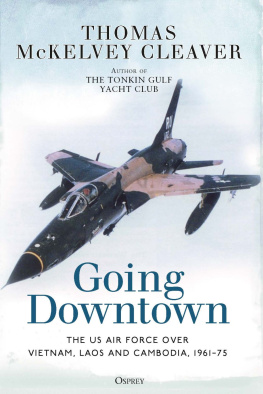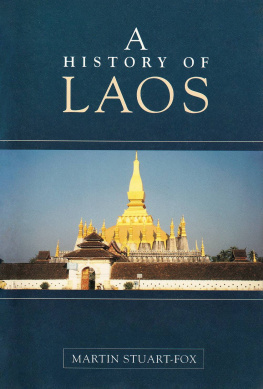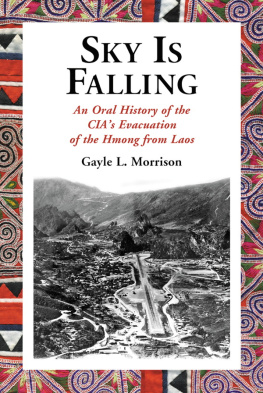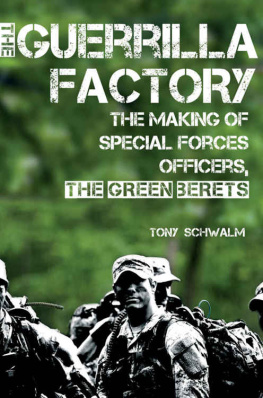THE GREEN BERETS IN THE LAND OF A MILLION ELEPHANTS
U.S. Army Special Warfare and the Secret War in Laos 195974
JOSEPH D. CELESKI

AN AUSA BOOK
Published in the United States of America and Great Britain in 2019 by
CASEMATE PUBLISHERS
1950 Lawrence Road, Havertown, PA 19083, USA and
The Old Music Hall, 106108 Cowley Road, Oxford OX4 1JE, UK
Copyright 2019 Joseph D. Celeski
Hardback Edition: ISBN 978-1-61200-665-9
Digital Edition: ISBN 978-1-61200-666-6 (epub)
Mobi ISBN 978-1-61200-666-6
A CIP record for this book is available from the British Library
All rights reserved. No part of this book may be reproduced or transmitted in any form or by any means, electronic or mechanical including photocopying, recording or by any information storage and retrieval system, without permission from the publisher in writing.
For a complete list of Casemate titles, please contact:
CASEMATE PUBLISHERS (US)
Telephone (610) 853-9131
Fax (610) 853-9146
Email: casemate@casematepublishers.com
www.casematepublishers.com
CASEMATE PUBLISHERS (UK)
Telephone (01865) 241249
Email: casemate-uk@casematepublishers.co.uk
www.casematepublishers.co.uk
This book is dedicated to all the United States Army Special Operations veterans of the conflict in Laos who fought, served and sometimes lost their lives to prevent the communist takeover of the Royal Kingdom of Laos. It is also dedicated to those who fought alongside them in this struggle: the special operators of the Central Intelligence Agency, pilots of Air America, U.S. embassy personnel who served in Vientiane, the Laotian armed forces (both army and air force), the Thai volunteers, and the Hmong, Kha, and Lao Theung tribesmen and their families. Our thoughts go out to the families who have lost loved ones among the Lao veterans over the years and we thank them for their service.
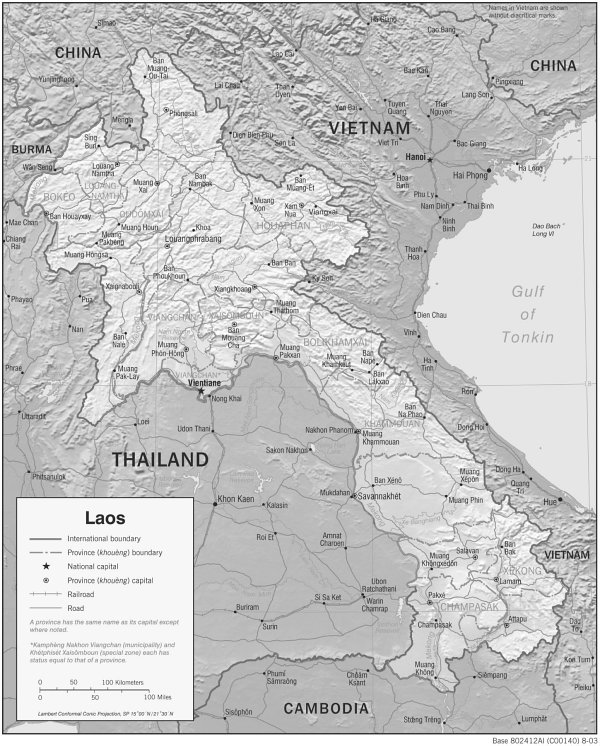
Foreword
In retirement, I was intrigued to go back and restudy the glimpses of occasional mention of Army Special Forces and their role in the war inside Laos. Most of what was known by us were the activities of Operation White Star . Anything else about the role of Special Forces and their participation Laos was unknown (or rare). This book is about the pursuit of that knowledge.
Laos was called The Land of a Million Elephants and the White Parasol. From 1954 to 1974, the U.S. government conducted operations in Laos to prevent the spread of communism and help defend the Royal Lao Government (RLG) against takeover by leftist coups and the alternative choice for the population: a communist government of the Pathet Lao (the Neo Lao Hak SatLao Patriotic Front).
Additional American objectives were deterring incursions into Laos by the North Vietnamese Army (NVA) and prevent their use of the Ho Chi Minh Trail to infiltrate into South Vietnam. American policy objectives focused on keeping Laos a pro-Western democracy, and if not, at least neutral. The war was dictated by the competing interests of the three Lao factions: The Royalists (or Rightists), the Neutralists, and the Leftists (the Pathet Lao). The Leftists were ideologically aligned with the tenets of communism and were supported and supplied by North Vietnam, China, and the Soviet Union (and other communist-bloc countries).
President Eisenhower formed his decision to support Laos in light of the prevailing theory of the Falling Dominos, in that if one Southeast Asian country fell to communism, so would the others. American operations were conducted by the Department of State, the Central Intelligence Agency, and selected organizations from the Department of Defense. These operations differed from the war next door in South Vietnam in that the authority to conduct the war and the exercise of command and control over various U.S. organizations was vested in the ambassadors assigned to the U.S. Embassy in Vientiane, Laos. Ambassadors Brown, Unger, Sullivan, Godley, and those who followed, each had full control over the military forces operating in Laos. One feature overwhelmingly shaped the American approach: the need to operate diplomatically and militarily within the Agreements and Protocols of Geneva, after the French departed from Indochina. The Agreement banned any intervention of foreign forces into Laos. American actions and policy (mostly conducted in a secret manner) would have to creatively maneuver around this restriction to provide monetary aid and military assistance to ensure Laos security.
American secret operations were an orchestrated mixture of USAID, the Military Assistance program (MAP), black and covered operations, and a covert/clandestine program using tribal forces to confront the Pathet Lao. Based on their inherent capabilities, U.S. Army Special Forces (SF) became the limited and discrete choice for deployable land power in this struggle. A regionally aligned, global response force, with a low signature footprint, and with the capability to conduct guerrilla warfare or act as military trainers in a counterinsurgency environment, was just the fungible type of military unit American decision-makers found highly useful to confront communist, revolutionary movement expansion. Additionally, an attractive option for policy makers was deniability. The conditions of the war in Laos were almost tailor-made for the employment and use of the Armys Green Berets in what would become one of the first of the Special Operations communitys Long Wars. It would also begin the transformation of the force from utilization in small, limited tactical deployments to support the regional Commander-in-Chiefs, to one of large-scale operations of the force to support strategic, foreign policy objectives of the U.S. The 77th Special Forces Group (Airborne), later to become the 7th Special Forces Group, the 1st Special Forces Group (Airborne), and the 46th Special Forces Company (Independent) all operated or supported operations within Laos.
U.S. Army Special Forces operated under the doctrine of Special Warfare . Embodied within this doctrine were the three, interrelated disciplines for response to irregular warfare: counterinsurgency (COIN), Psychological Warfare, and Unconventional Warfare (UWguerrilla warfare, subversion, and escape and evasion activities). Two Special Forces missions are key in a COIN environment: Foreign Internal Defense (FIDproviding combat trainers and advisors) and UW (the training and employment of government or externally sponsored guerrillas).
There were four major uses of Army Special Operations Forces (ARSOF) during the war:
Operation Hotfoot , August 1959 to April 1961. This included the use of U.S. Army Green Berets and SOF communications and PSYOP personnel to train the Laotian Army via FTTs and MTTs (Field and Military Training Teams), all the while dressed in civilian clothes and with a cover story. Hotfoot teams became involved in some of their first combat operations during and after the Battle of Vientiane in December of 1960.
Operation White Star , April 1961 to October 1962. President Kennedy authorized the overt use of Green Beret teams from the 7th SF Group and the 1st SF Group to perform combat advisory duties with Laotian regular and irregular, guerrilla forces. The rate of combat involvement increased for Army SF. By the summer of 1962, over 400 Green Berets were operating in Laos. All American forces in Laos (less the Embassy military staffs) were removed by October 1962 under the provisions of the new peace agreement in Geneva.

